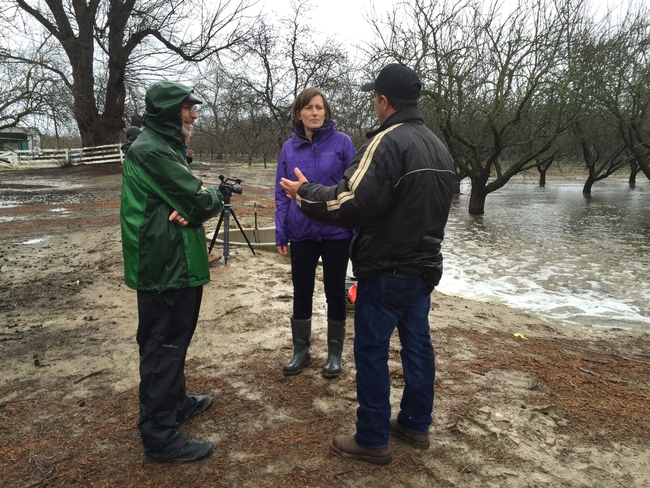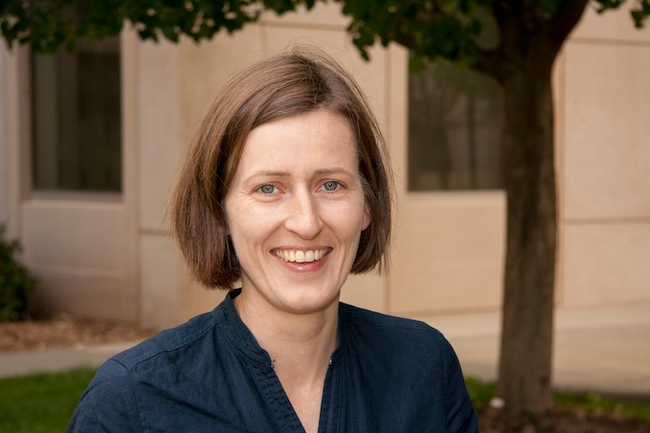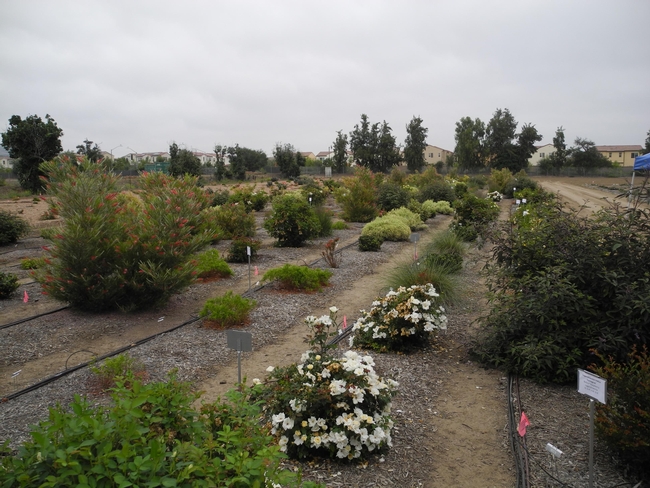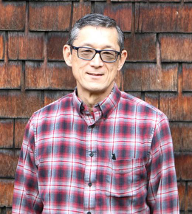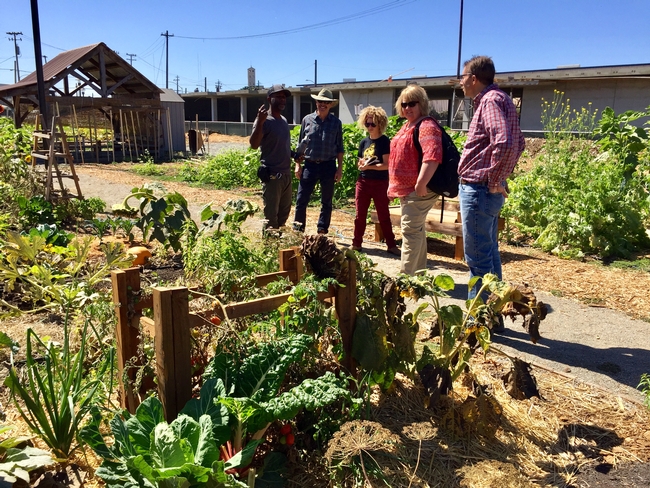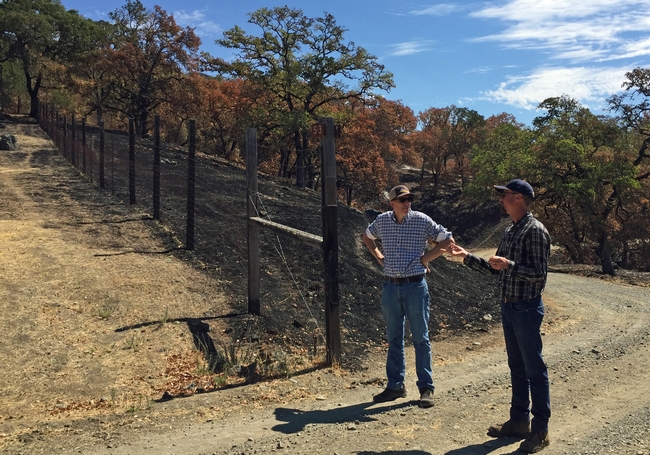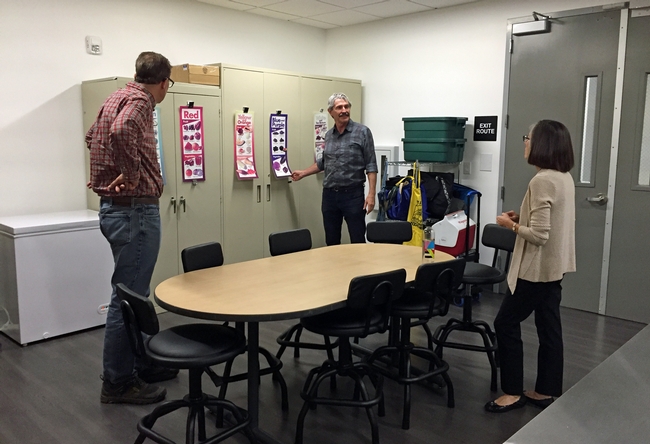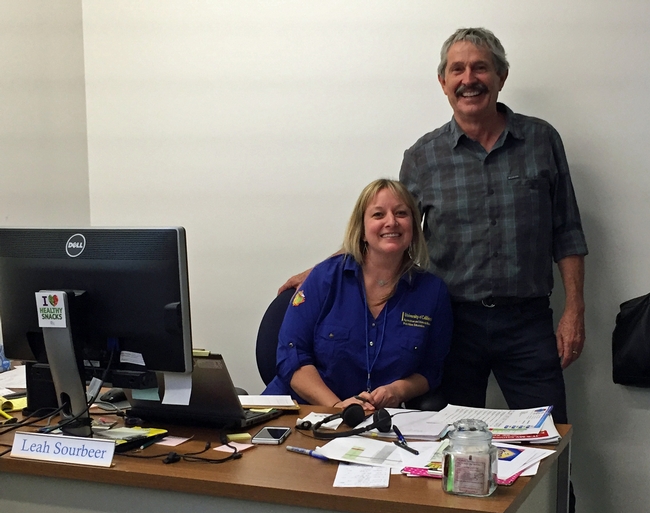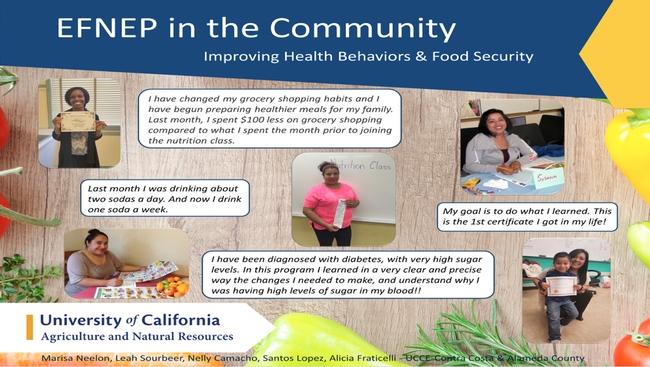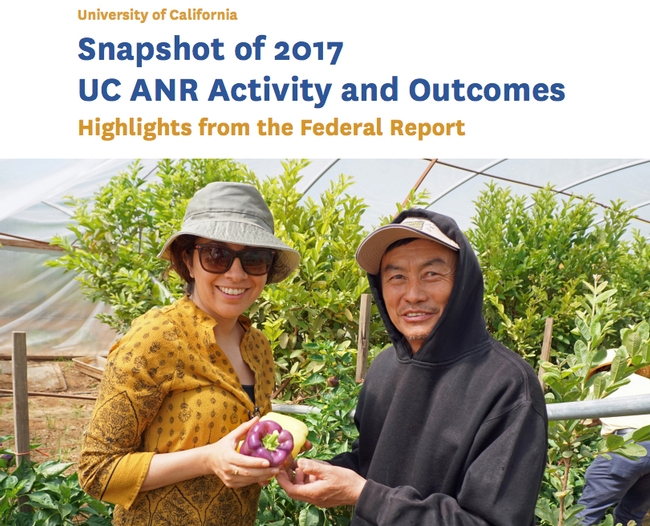Posts Tagged: Water Quality Quantity and Security
Strategic Initiative Brief: Dahlke named Water Strategic Initiative leader
Following an open call, Helen Dahlke has agreed to take on the role of leader for the Strategic Initiative for Water Quality, Quantity and Security.
Dahlke is associate professor in integrated hydrologic sciences in the UC Davis Department of Land, Air and Water Resources. She brings a rich history of experience having completed her undergraduate and master's degrees in her native Germany before earning her Ph.D. at Cornell University. After her Ph.D., she did postdoctoral work at Stockholm University in Sweden before joining UC Davis in 2013.
“California's water quantity, quality and security are increasingly impacted by uncertainty and scarcity,” said Dahlke. “As leader of the water SI, I hope to learn about the water challenges in California to develop and communicate solutions with the UC ANR team and our stakeholders.”
Dahlke's current research interests include surface water – groundwater interaction, water resources management, vadose zone transport processes, and applications of DNA nanotechnology in hydrology. She comes with a broad appreciation of the multiple roles for addressing issues facing water across the state from the mountains to the sea. One of her main research efforts focuses on testing the feasibility of using agricultural fields as recharge sites for groundwater replenishment.
“We welcome and thank Helen for adding this new role to her ongoing activities,” said Mark Bell, vice provost for strategic initiatives and statewide programs. “The SI leaders are the champions for the broad umbrellas of work across the organization.”
The Strategic Initiatives help people connect while helping unify, communicate and advocate for UC ANR's work across the state. The SI leaders are part of Program Council, which provides input for programmatic policy and direction for the organization.
$1 million grant expands climate-ready landscape plants program
A research project initiated in the Department of Plant Sciences at UC Davis evaluates landscape plants in two-year trials under varying irrigation levels to determine the best irrigation level for optimal plant performance in regions requiring supplemental summer water. Creating water budgets is required by California's Model Water Efficient Landscape Ordinance (MWELO), and the results from these research trials help landscape professionals and home gardeners make informed decisions when specifying, selecting or promoting low water-use landscape plant material.
This year, the CDFA/USDA Specialty Crops Multistate Program funded a new Climate Ready Landscape Plants project, which will replicate the successful fields that are currently installed at UC Davis and UC ANR South Coast Research and Extension Center in Irvine.
Loren Oki, UC Cooperative Extension specialist in the UC Davis Department of Plant Sciences, is the lead principal investigator and collaborators include researcher Jared Sisneroz; project leader Karrie Reid, UC Cooperative Extension environmental horticulture advisor in San Joaquin County; and Darren Haver, UC Cooperative Extension water resources and water quality advisor and director of South Coast REC and UCCE in Orange County.
Under Oki's oversight, this new $999,992 grant will support the development of additional fields at several western universities:
- University of Washington, Soo-Hyung Kim
- Oregon State University, Lloyd Nackley and Ryan Contreras
- Utah State University Center, Youping Sun and Larry Rupp
- University of Arizona, Ursula Schuch
Conducting these new experiments on landscape plants at diverse sites across the western U.S. will reveal differences in recommendations since irrigation guidelines for landscapes vary depending on climate and soil type.
The initial project was initiated as Reid's master's degree thesis research in 2004, with Oki as her major professor, and has been ongoing since then.
Project descriptions, results and images can be seen at the UC Landscape Plant Irrigation Trials website at https://ucanr.edu/sites/UCLPIT.
Apply by Nov. 9 to be SI leader for Water or Healthy Families and Communities
ANR academics are invited to apply for Strategic Initiative leader positions, which play key roles in unifying, communicating and advocating to strengthen UC ANR's research and outreach agenda. Given the ongoing evolving role of the UC ANR Strategic Initiatives (SI), the SI leaders agreed that it would again be beneficial to conduct an open search – from across the breadth of expertise of the division – for the next rotation of SI leaders.
Open Positions. Two SI leader positions are scheduled to rotate off at the end of 2018. This change offers opportunities for others to take the lead for
Who is eligible to apply? The positions are open to all UC ANR academics, including Agricultural Experiment Station faculty and Cooperative Extension advisors and specialists. Strategic Initiative leaders are appointed by the Associate Vice President on a rotating basis for three years, with a possibility of extension.
Current SI leaders
- Endemic and Invasive Pests and Diseases Jim Farrar
- Sustainable Food Systems Deanne Meyer and Neil McRoberts
- Sustainable Natural Resources David Lile
- Water Quality, Quantity and Security Doug Parker
- Healthy Families and Communities Keith Nathaniel
The SIs help unify, communicate and advocate for what UC ANR does. See the UCANR Strategic Initiatives website for more information.
To apply for one of the SI leader positions, complete the simple form at http://ucanr.edu/survey/survey.cfm?surveynumber=25782. Applications will be accepted until Nov. 9.
Applicants will be contacted for interviews in late November or early December. The new leaders are anticipated to start on Jan. 2, 2019.
For information regarding the roles and responsibilities of the Strategic Initiative leader position, see the Terms of Reference for Strategic Initiative Leaders. If you have questions, contact Mark Bell, vice provost of Strategic Initiatives and Statewide Programs.
RECs and county office staff update ANR leaders on current projects
To get acquainted with the people at each ANR location, Mark Lagrimini, vice provost of research and extension, has been visiting research and extension centers and UCCE county offices and touring the facilities.
“I'm impressed with how passionate and dedicated you are to helping people,” said Lagrimini to UCCE Contra Costa staff after listening to their project updates. He has been impressed with the work he has seen at all of his ANR visits.
On Sept. 6, Lagrimini visited Hopland Research and Extension Center, three weeks after the River Fire consumed about two-thirds of its property.
“While the River Fire damaged parts of the center, none of the main buildings, residences, livestock nor staff were hurt by the fire,” said John Bailey, Hopland REC interim director.
Scientists are invited to a site tour on Oct. 19 to learn more about research opportunities at Hopland REC.
“With Hopland REC's extensive pre-fire historical data, plus immediate post-fire, pre-rain observations that we are collecting, we have the foundation to support relevant and timely research on the effects of fire and mechanisms of recovery,” Bailey said.
AVP Wendy Powers and Mark Bell, vice provost of Strategic Initiatives and Statewide Programs, are joining Lagrimini for many of the visits to learn the latest about UCCE research and outreach and to answer questions from staff.
On Sept. 11, Rob Bennaton, UCCE director in Alameda and Contra Costa counties, introduced Powers, Lagrimini and Bell to UCCE staff in their Hayward offices, then took them to West Oakland to tour City Slicker Farms. UCCE Master Gardeners and 4-H members partner with City Slicker Farms, teaching people how to grow food at the site.
“Success to us is putting food where people need it and giving them the skills to grow food,” said Rodney Spencer, executive director of City Slicker Farms.
In Concord, Marisa Neelon, UCCE nutrition, family and consumer sciences advisor in Contra Costa County, gave Powers, Lagrimini and Bell a tour of the new office space, which includes space for Master Garden volunteers, a kitchen for nutrition educators to prepare food and a lab for farm and IPM advisors to store and analyze samples.
Staff from each unit delivered a presentation about their current projects for the ANR leaders, who were joined by Humberto Izquierdo, agricultural commissioner for Contra Costa County and Matthew Slattengren, assistant agricultural commissioner.
Charles Go, 4-H youth advisor, and Adan Osoria, EFNEP community nutrition educator, described how 4-H and EFNEP teamed up for 4-H2O, an after school project aimed at reducing consumption of sugar-sweetened beverages and increasing water consumption to improve community health and wellness. They launched 4-H2O at John Swett High School in Crockett. At the request of 4-H members, the local school board approved hydration stations and instructed the schools to provide water at meal times, Go said.
Andrew Sutherland, Bay Area urban IPM advisor, described his research on baiting for cockroaches, subterranean termites and yellowjackets and outreach to educate pest control professionals to practice IPM in schools and multi-unit housing.
“I appreciate the work Andrew does,” said Izquierdo, noting that there is a need for pest management education, especially among the county's urban and immigrant populations.
After seeing all of the presentations, Bell said, “The enthusiasm you bring to your job is inspiring.”
After the visit, Powers wrote in her ANR Adventures blog on Sept. 14: “The programs we've seen in Contra Costa and Alameda Counties this week as well as Santa Clara County a couple weeks back are good reminders of the benefits to all of UC ANR when we have strong, relevant programs in urban areas. These programs not only help the clientele, directly, but help increase the visibility of UC ANR and all of its programs across both urban and ag areas.”
On Sept. 26, Powers, Lagrimini and Bell visited UCCE Riverside, then UCCE San Bernardino the following day.
“We spent yesterday in Riverside meeting with the teams from both UCCE Riverside and UCCE San Bernardino,” Powers wrote in ANR Adventures on Sept. 27. “It was very informative, particularly seeing the fresh ideas that are coming from some of the new staff. We were able to hear about the tremendous success that both counties are having truly working as a team across program areas and layering their efforts for increased program success and support.”
Federal Report Snapshot highlights ANR accomplishments
Each spring, the UC ANR Office of Program Planning and Evaluation (PPE) compiles and submits a report to our federal funding partner, USDA's National Institute of Food and Agriculture (NIFA). In August, NIFA approved UC ANR's 2017 report.
A snapshot of the 2017 UC ANR Federal Report is available at the following link: https://ucanr.edu/sites/anrstaff/Divisionwide_Planning. The snapshot highlights several dozen examples of research and extension occurring in each Strategic Initiative and in the field of sustainable energy. The Federal Report Snapshot can be shared with stakeholders and potential donors to help them better understand the breadth of projects and range of impacts that occur throughout ANR in a given year.
The full report that was submitted to NIFA captures the annual activities, outputs, and outcomes that occur throughout ANR as a result of NIFA funding on campuses, in counties and at the research and extension centers.
Information for the report comes from submissions entered in REEport, DANRIS-X (now replaced by Project Board for FY 2018 and on), and UC Delivers. Content experts identify the most significant research highlights and write the program area narrative summaries. This year we want to thank Chris Greer, Cheryl Wilen, Keith Nathaniel, John Harper, Doug Parker and Jeff Dahlberg. Because the report is thorough and lengthy, PPE has created this condensed snapshot, which is drafted with input from Communications Services.
Both the snapshot and full report are available at https://ucanr.edu/sites/anrstaff/Divisionwide_Planning.

